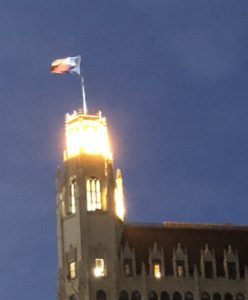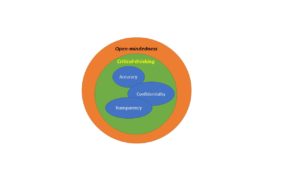CYBERLAW: Universal City Studios, Inc. v. Reimerdes

111F Supp 2d 294
(U.S. Dist. Ct., So Dist. NY, 2000)
Historical and legal considerations that play a role in policy and legislative cybersecurity law
FACTS
Content Scramble System (CSS) was an access control and encryption program developed by motion picture companies to protect their copyrights for DVD-produced movies. DeCSS was a software utility designed to break CSS encryption. The defendant, Eric Corley, AKA Emmanuel Goldstein, was the leader of 2600, The Hacker Quarterly, an Internet distributed magazine for hackers, and included co-defendants Roman Kazan and Shawn Reimerdes. Defendants posted the source and object codes for DeCSS on their web site in November 1999 as well as a number of listed mirror sites for others to download. “They said the program was meant to allow viewing of DVD movies on computers running the Linux operating system and thus did not violate the copyright law. The law [“fair use”] provided an exception for products intended to allow interoperability,” (New York Times, 2000).
ISSUES
Plaintiffs contended violation of the Digital Millennium Copyright Act (DCMA). Defendants counter that there was no violation and their acts were protected by the 1st Amendment. Any prevention of their actions infringed on their allowable rights of “fair use” of the US Copyright Act. Did the defendants violate the DCMA? Did technological access controls, such as CSS, infringe on the defendants’ right of “fair use?”
Was the defendants’ argument that any computer code, regardless of function, considered “speech,” and protected and guaranteed under the 1st Amendment? If this were true, then the government could not issue any laws or regulations in violation of the 1st Amendment. Additionally, their argument was that computer code was “expressive” and therefore was protected as a form of freedom of expression as well.
RULES
The DCMA was the primary law in question. The two provisions that need to be violated are: 1) “…the act of circumventing” a technology explicitly designed to protect a copyright, and 2) the act of distribution of such technologies to allow for unauthorized access to copyrighted materials. In this case, the second provision is primarily in question because the defendants did not design the technology originally created by Norwegian hacker, Jon Johansen.
The Copyright Act portion of the DCMA addressed more explicitly the trafficking component of the law. Violators may not “…offer the public” such circumvention technologies, and it must be only of “limited” commercial value, or is not “marketed” to further circumvent the Copyright Act. Defendants did not deny that they provided such technologies to the general public via the Internet; the commercial value can be argued was substantial to the plaintiffs.
The defendants relied heavily on their 1st Amendment arguments. They argued that code was “free” speech and “expressive,” and cannot be impinged by governmental law or regulation. They contended “fair use” applies since it was allowed under the Copyright Act; their actions were not counter to the Act which allowed limited use for “appropriate purposes.” They asserted that their effort was to support creating and fostering the creation of a Linux-based encryption solution for DVD players by providing the DeCSS to the general public at-large.
ANALYSIS
With respect to the DCMA, even though the defendants did not create the technology to decrypt the DVD movie formats, they clearly admitted and distributed DeCSS to a wide-ranging Internet audience. These unknown individuals could have clearly abused this technology for both personal and financial gain. If they had limited their distribution to, for example, known academic or commercial developers for the purpose of creating a new technology, in accordance with the principle of “fair use,” they may have had much greater protections from prosecution. The court accurately determined that all of the defendants’ arguments were meritless and violated the DCMA.
The main contentions of 1st Amendment protections especially with regards to “fair use” and the Copyright Act failed. The distribution of such technology was not of negligible commercial value; the courts rightly determined that distributing DeCSS “compromised plaintiffs’” copyright protections and were not “limited” in its commercial value; it can easily be demonstrated in that time period that financial damages to Universal Studios could have been in the millions of dollars.
The judge denied the argument by the defendants that since the plaintiffs’ used a “weak” 40-bit encryption key, that the plaintiff knowingly negated their own copyright protections. The defendants did not further raise this issue to the court, and it appropriately was not a defensible argument. The fact that any encryption can be broken with enough computer processing power and time would make any past, present or future encryption program “weak,” and a totally baseless argument for anyone to propose as a matter of defense.
Finally, the argument by the defendants that the wide distribution of DeCSS was meant to allow viewing of DVD movies on computers or players running the Linux is non-sense. Their ability to break a Windows-based encryption system and to have access to unencrypted DVD movies is illogical. They could have created a Linux-based encryption program, with a larger encryption key that could have been tested on un-copyrighted materials or self-created test movies vice purloining copyrighted materials. This was never an issue of “interoperability,” (New York Times, 2000); it was for the purpose of video “piracy” and not an altruistic effort to create other DVD encryption systems.
CONCLUSION
The court accurately understood and executed the applicable laws in relation to the technological issues discussed. The defendants were engaged in efforts to circumvent copyright laws and to engage in the theft of intellectual property owned by the plaintiffs. The defendants can make no clear argument, even under the 1st Amendment, that this was an effort to heighten the state of technology. Their distribution of DeCSS in no way could be argued would directly encourage the technical community to provide alternative technologies for other operating systems for the commercial market.
The court recognized that the defendants’ actions were a theft of copyrighted materials and “…threaten[ed] to reduce the studios revenue from the sale and rental of DVDs.” Their activities were not only criminal, but damaging to software developers. The harm may have also included damaging and delaying efforts by legitimate developers to create viable technological alternatives and benefits for the average consumer.
EDITOR’S NOTES: The conclusion is the academic opinion of the author, and not a legal determination of the actual case.
REFERENCES
New York Times. (2000, January 24). Court
Tells Web Sites to Remove Code. Retrieved from New York Times: http://www.nytimes.com/2000/01/24/business/court-tells-web-sites-to-remove-code.html?n
=Top/Reference/Times%20Topics/Subjects/C/Computers
%20and%20the %20Internet&scp=3&sq=reimerdes&st=cse.
Universal City Studios, Inc. v Reimerdes, 111 F Supp 2d 294 (U.S. Dist. Ct., So Dist. NY, 2000 August 17, 2000).

Ms. Columbus has worked in the Intelligence Community (IC) for over 20 years. She retired from the US Air Force in 2014 after working as a Senior Advisor providing authoritative advice on all aspects of Cyberspace operations, force structure and organizational concepts. She oversaw strategic support activities to enable the right mix of cyber capabilities for future operations.









